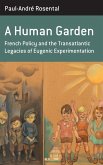Even in crowded metropolitan areas, Japan's temple precincts preserve not only architecture, but the garden traditions of earlier centuries as well. To step into a temple garden is, in effect, to tread the paths of Japanese aesthetic history. This time travel experience is not unlike venturing into a medieval church situated in a modern Western metropolis. The recognized religious traditions survive in the layout and rationale of Japan's gardens: Shint , Buddhist, and Confucian. This book explores the distinct priorities and vocabularies of these traditions as expressed in the elements of garden design, historically tracing their shared features and their interactions at particular sites. Amply illustrated, it orients the reader to the different functions of gardens, such as whether they are to be looked at or walked in.
"This very timely and important book helps us to better understand the unique cultural and environmental factors that have for centuries influenced the basis and evolution of the Japanese landscape. Seiko Goto has given a very comprehensive and personal explanation as to the meaning and significance of Japanese landscape design. This is a valuable text appropriate for use as a course text or as an addition to personal and institutional libraries." (Professor Charles H. Thomsen, Associate Dean, Faculty of Architecture, University of Manitoba)
"Seiko Goto's work illustrating the architecture of Japanese temple gardens makes a valuable contribution to the development of religion in Japan and is important to students of art and architecture, history, and religion alike." (Willard G. Oxtoby, Professor of Comparative Religion, University of Toronto)
"Seiko Goto's work illustrating the architecture of Japanese temple gardens makes a valuable contribution to the development of religion in Japan and is important to students of art and architecture, history, and religion alike." (Willard G. Oxtoby, Professor of Comparative Religion, University of Toronto)








